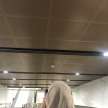
A rainbow is a breathtaking display of colorful beauty that appears in the sky after a refreshing rain shower. This stunning natural phenomenon has captivated human imagination for centuries, inspiring artistic expressions, mythological stories, and scientific inquiry. In this article, we will delve into the fascinating science behind the formation of rainbows, exploring the optical and atmospheric conditions that come together to create this mesmerizing spectacle.
The Prerequisites for a Rainbow
Rainbows require a specific set of conditions to occur. The first essential element is sunlight. The sun must be shining brightly, but not directly overhead. The ideal angle of the sun is between 48 and 54 degrees relative to the observer's position. This angle ensures that the sun's rays enter the Earth's atmosphere at a shallow angle, allowing them to interact with water droplets in the air.
The second crucial element is water droplets in the air. These droplets can come from various sources, including clouds, mist, fog, or even the spray from a waterfall. The droplets must be spherical and uniform in size, typically ranging from 0.5 to 1.5 millimeters in diameter. This size range is critical, as it allows the droplets to act as prisms, refracting and dispersing the sunlight.
The Refraction and Dispersion of Light
When sunlight enters the Earth's atmosphere, it encounters the water droplets and is refracted, or bent. This bending occurs because light travels at different speeds in air and water. As a result, the light is split into its individual colors, a process known as dispersion. This is the same principle that occurs when light passes through a prism, such as a glass of water or a diamond.
The different colors of the visible spectrum have distinct wavelengths, ranging from approximately 400 nanometers (violet) to 700 nanometers (red). As the light is refracted and dispersed, the shorter wavelengths (violet and blue) are bent at a slightly greater angle than the longer wavelengths (red and orange). This separation of colors is known as chromatic dispersion.
The Angle of Refraction and the Rainbow's Shape
The angle at which the sunlight enters the water droplet is critical in determining the shape and position of the rainbow. The angle of refraction, typically around 42 degrees, causes the light to be bent towards the normal (a line perpendicular to the surface of the droplet). This bending creates the circular shape of the rainbow, with the colors appearing in the order of their wavelengths.
The position of the rainbow is also dependent on the angle of refraction. The rainbow will always appear on the opposite side of the sky from the sun, at an angle of approximately 42 degrees from the direction of the sun. This is why we often see rainbows in the eastern sky during the late morning or early afternoon, when the sun is in the western sky.
The Double Rainbow Phenomenon
Occasionally, a secondary rainbow may appear outside the primary arc, with colors that are reversed. This is caused by light being reflected twice before reaching the observer's eye. The secondary rainbow is fainter and appears about 10-15 degrees outside the primary arc. The colors of the secondary rainbow are reversed because the light has been reflected twice, resulting in a 180-degree phase shift.
Conclusion
Rainbows are a breathtaking display of atmospheric optics, requiring a precise combination of sunlight, water droplets, and angles. The refraction and dispersion of light create the colorful spectrum we see in the sky, with the angle of refraction determining the shape and position of the rainbow. By understanding the science behind this phenomenon, we can appreciate the beauty and complexity of the natural world. So, the next time you spot a rainbow, remember the intricate dance of light and water that comes together to create this stunning spectacle.
About the Creator
Awin Stella
hello nice to meet you,thanks for visit my profile.i am 18 years old.still young but I wish oneday I can be a good novelist.see you soon inshaallah
Enjoyed the story? Support the Creator.
Subscribe for free to receive all their stories in your feed. You could also pledge your support or give them a one-off tip, letting them know you appreciate their work.






Comments
There are no comments for this story
Be the first to respond and start the conversation.